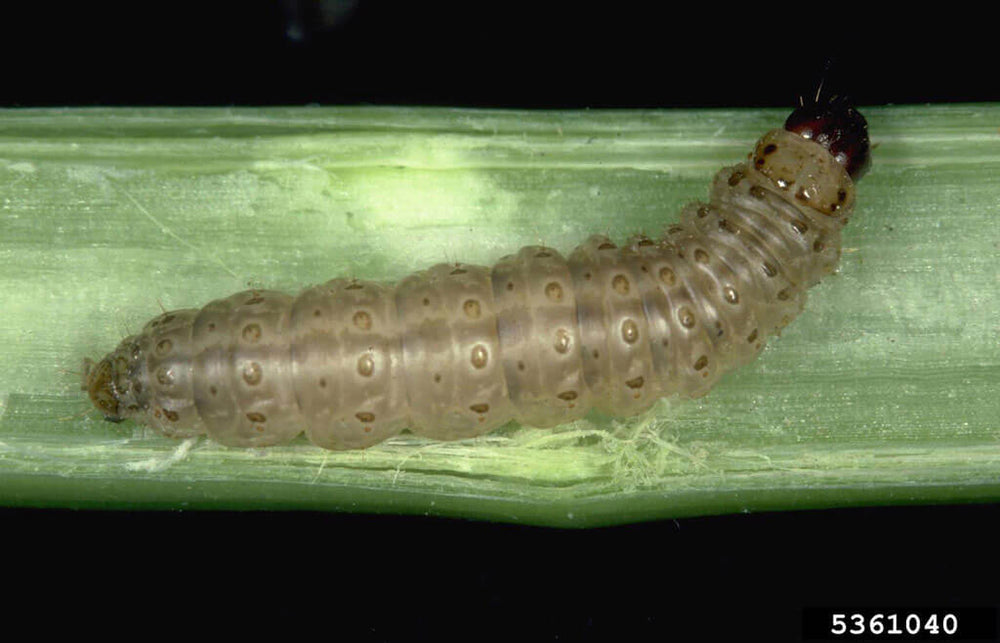
No, they aren't just in Europe, and they don't just eat corn. In fact, European corn borers live across much of the U.S. and will tunnel their way into a wide variety of fruits and vegetables. Because they're difficult to stop once inside your produce, prevention is key. Let us teach you how to prevent and control the European corn borer.
How to get rid of European corn borers.
What are European corn borers?
European corn borers (Ostrinia nubilalis) are caterpillars that tunnel through the insides of corn stalks. In fact, they're considered one of the biggest causes of damage to corn crops in the U.S. They also occasionally attack beans, beets, celery, peppers, and potatoes. They're present throughout the United States except west of the Rockies. These caterpillars are the larvae of moths.
What does European corn borer damage look like?
Because borers are hidden inside the plant, you have to scan for clues to detect their presence. Look for round holes in leaves, broken stalks, sawdust castings outside entry holes, or broken tassels. The caterpillars sometimes burrow up into the base of corn ears. The tunneling activity interrupts water and nutrient flow inside the plant, leading to stunted growth and wilting.
Note that there are other possible sources of damage to your corn plants, including corn earworms and corn rootworms. Be sure you've correctly identified the culprit before creating your treatment plan.
How do I prevent European corn borers?
Prevention of European corn borers actually starts at the end of the previous growing season. Because European corn borers overwinter inside old stalks left lying around, be sure to thoroughly clean your garden after harvest. You can compost stalks if you shred them first. Otherwise, it's best to destroy the stalks by burning them (where allowed), putting them in the trash, or taking them to a commercial composting site where higher temps will take care of any lingering borers.
How can I control European corn borers?
Once corn borers are inside the plant, there is nothing you can do to kill the pests. In many cases, gardeners just learn to tolerate them. However, you can spray to help prevent future generations of European corn borers and to stop those who haven't yet made their way into your produce. Spray plants with an approved insecticide designed to combat European corn borers, such as Ortho® Outdoor Insect Killer Ready-to-Spray. If you choose to spray, be sure to thoroughly coat the undersides of leaves, where corn borer moths lay their eggs. Follow product label instructions carefully and avoid spraying when bees are active.
Need more info and local pesticide recommendations? Contact your regional Extension agent. You can find the nearest Extension office through the Cooperative Extension System map.
There are few things more frustrating for gardeners than finding European corn borers inside your fruits and veggies. But with smart prevention strategies, you can help protect your crop from future infestations, ensuring a bigger bounty for you.







 Herbs
Herbs
 Vegetables
Vegetables
 Fruit
Fruit
 Flowers
Flowers
 Succulents
Succulents


